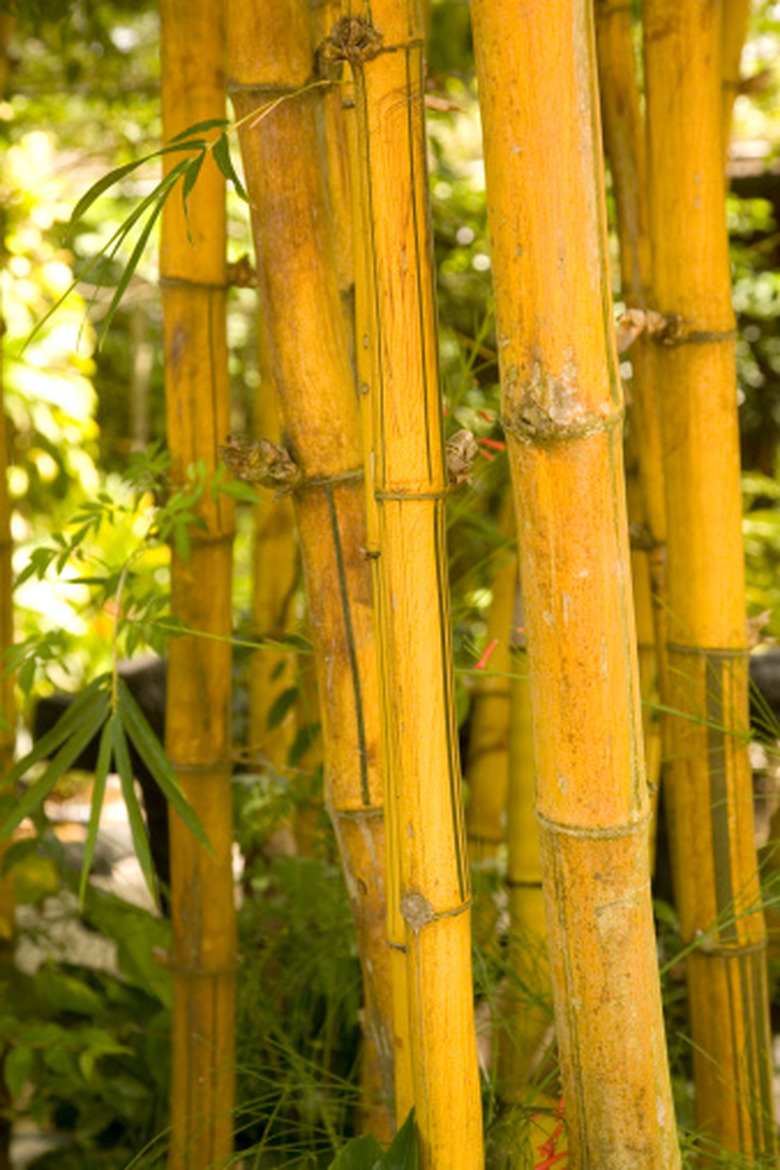Do Bamboo Plants Need Sunlight?
True bamboo needs sun. Whether it is direct sun, partial sun, partial shade or indirect sun, all true bamboo needs sunlight. Lucky bamboo, a water lily that looks very much like bamboo, can survive for very long periods of time indoors. However, lucky bamboo is not bamboo.
True bamboo needs sun. Whether it is direct sun, partial sun, partial shade or indirect sun, all true bamboo needs sunlight. Lucky bamboo, a water lily that looks very much like bamboo, can survive for very long periods of time indoors. However, lucky bamboo is not bamboo.
Types
True bamboo is a tall forest grass that can sometimes reach over 100 feet tall. Because bamboo grows naturally under a protective forest cover, different species have different tolerances for sun. Shorter species may be less tolerant, while taller species may do well.
- Whether it is direct sun, partial sun, partial shade or indirect sun, all true bamboo needs sunlight.
- Because bamboo grows naturally under a protective forest cover, different species have different tolerances for sun.
Considerations
Other considerations for sun tolerance are local climate. In very dry areas, for example, bamboo may be more tolerant of sun than in a moist climate. According to the University of Maryland, bamboo that does well in sun or shade may do better in shade during hot, dry summers.
Warning
Consider where you will plant the bamboo when selecting a variety. Although bamboo can be very tolerant of lighting conditions, some varieties do better in certain specific lighting conditions. By matching the variety to your growing conditions, your bamboo may do better.
Artificial Light
If growing bamboo indoors, they can sometimes grow well with adequate artificial light. However, make sure you provide adequate grow lighting for your bamboo. How much you will need will depend on the size and type of bamboo.
- Other considerations for sun tolerance are local climate.
- By matching the variety to your growing conditions, your bamboo may do better.
Bamboo-like Plants
Giant reed, sometimes called Spanish cane, has oblong, pointed leaves similar to those on bamboo, although it has a woody stem instead of a green one. As part of the grass family, it is distantly related to bamboo. Sometimes called the "tree from heaven" in Chinese culture, the lucky bamboo plant is considered a key element in a feng shui atmosphere. Its leaves are oblong, but they start out a reddish-purple shade when new and often turn red in the winter, unlike bamboo. This isn't a bad choice as an attractive shrub for your garden, but it isn't a true bamboo. The bamboo palm may be a viable alternative to bamboo if you need an indoor plant, as the bamboo palm is tolerant of low light and needs consistently warm temperatures. You can plant bamboo palm outside or grow it in a pot on your patio, deck or rooftop garden; it grows well in areas that never fall below 28 degrees.
- Giant reed, sometimes called Spanish cane, has oblong, pointed leaves similar to those on bamboo, although it has a woody stem instead of a green one.
- The bamboo palm may be a viable alternative to bamboo if you need an indoor plant, as the bamboo palm is tolerant of low light and needs consistently warm temperatures.
References
- Palomar Community College: Bamboo – Remarkable Giant Grasses
- University of Missouri: Lighting Indoor Houseplants
- Terra Viridis: Plants Commonly Mistaken for Bamboo
- Bamboo HQ: Lucky Bamboo — Not a Bamboo
- Burt Associates Bamboo: Growing Bamboo
- SF Travel: San Francisco Weather Averages
- Esprit de Isle: Lucky Bamboo
